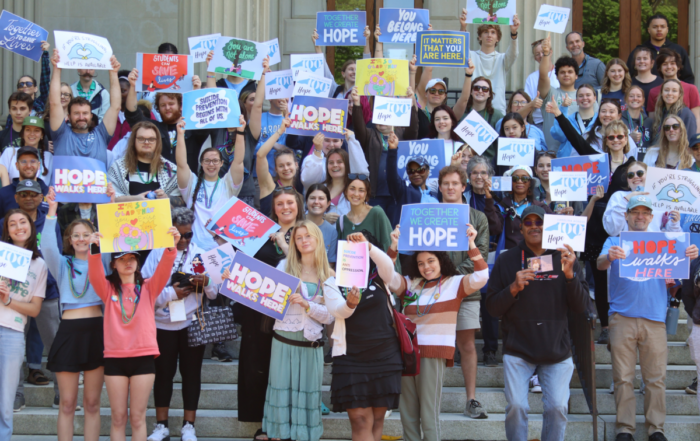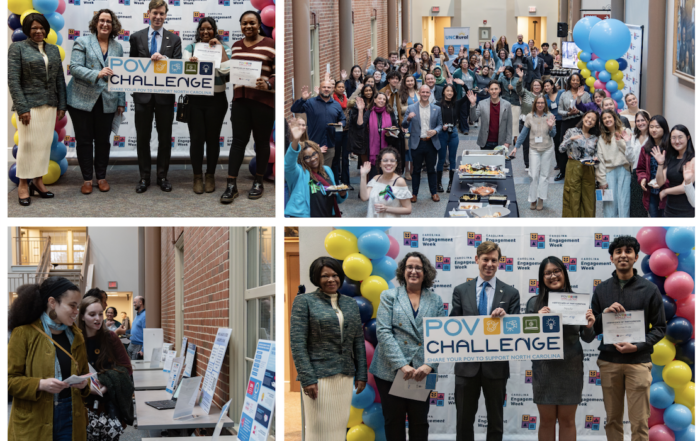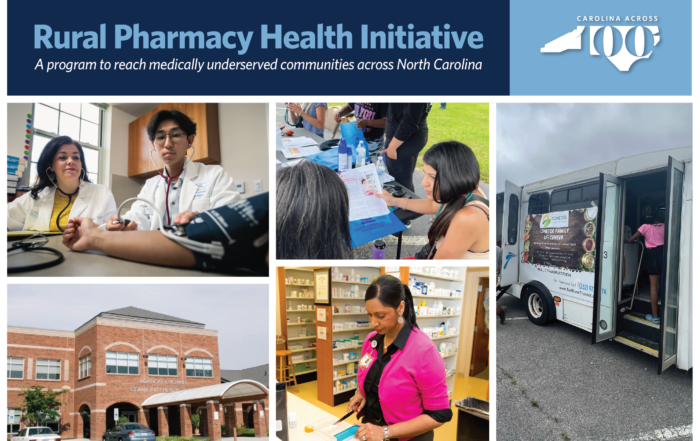Health
The Hidden Fallout: Addressing the Impact of Suicide on Survivors and Communities in North Carolina
Natalie O’Brien, Research Instructor, CHAAMP
July 27, 2023

In March 2016, I became a suicide loss survivor.
I woke up that morning thinking it was just another day, but it was the day that my life and my children’s lives were forever changed. That day I was left wailing on my living room floor after the sheriffs arrived at my home and told me my husband, Chuck, had died by suicide. In that moment and in the hours, days, months, and years after—when I needed the most support and resources to navigate my family’s traumatic loss—I was left alone to find my own way.
The Ripple Effects of Suicide
Suicide is a devastating issue that affects many individuals, families, and communities in North Carolina. According to the Centers for Disease Control, 1,448 lives were lost to suicide in North Carolina in 2021. However, the impact of suicide extends far beyond the person who dies by suicide.
Chuck was not only my husband but a father, son, brother, uncle, in-law, friend, neighbor, coach, coworker, and so much more to the many people whose lives he touched. For any person who dies by suicide, there are family members, friends, and loved ones who are profoundly affected by the loss. In addition, the cascading effects of a death by suicide are also experienced by first responders, coworkers, school professionals, medical and mental health providers, and the community at large.
What many people do not realize is when someone dies by suicide, the pain the suicide victim was experiencing does not end. In a sense, that pain is transferred to their survivors – the bereaved family, friends, and community. The pain experienced by suicide loss survivors is often intense and long-lasting. Those closest to the deceased can experience a range of emotional and psychological challenges, including depression, anxiety, post-traumatic stress disorder, guilt, anger, and a sense of isolation. Sadly, those who lose a loved one to suicide are also more likely to experience suicide ideation and attempts and they are 2-3 times more likely to die by suicide themselves.
Searching for Support
Fortunately for me, prior to Chuck’s death, I had already had some awareness of the numerous mental health risk factors that individuals who have lost someone to suicide often experience. With a master’s degree in clinical psychology and a career focused on injury prevention and mental health research, I had some background knowledge in this area. However, despite my training and experience, I found myself unprepared for the harsh reality I confronted as a suicide loss survivor.
After I was notified of Chuck’s death, I was left to my own devices to figure out what to do next. The law enforcement officers who notified me did not know what to say or what to tell me to do. And while my children’s school tried to be supportive, they did not know how to respond to children who suffered a traumatic loss or how to best support them academically. I was not provided with any community-based resources or connected with any mental health professionals who could help me and my family.
While I was experiencing my own disbelief, shock, pain, and grief, I had to become an advocate and researcher for my family. When I was not working or caring for my kids, I spent my time reading every book I could find about suicide loss, scouring the internet for resources, joining online suicide loss support groups, and reaching out to old colleagues and friends for guidance. I can only imagine that those without the resources or knowledge I had face even greater challenges when seeking the help they need.
What I discovered is that in my community, and in our state, there are not many resources or trained professionals to help those who are bereaved by suicide. Even when the resources do exist, North Carolina lacks a system to effectively connect suicide loss survivors to them. In fact, it took me over three years of searching on my own to find the Center for Child and Family Health, which specializes in helping families who have experienced trauma.
Becoming an Advocate
Unfortunately, I have learned that my experience as a suicide loss survivor is not unique. According to the National Action Alliance for Suicide Prevention, “The burden of figuring out which services might be needed, where to find them, and how to access them falls on loss survivors themselves, including the newly bereaved. The stress experienced by those who have suffered a recent loss is often unnecessarily aggravated by this ‘hit-or-miss’ response from the community.”

By sharing my own story, I hope to shed light on the experiences of suicide loss survivors and highlight the critical importance of establishing coordinated and comprehensive prevention and postvention responses across the communities in our state. In my pursuit to help others in North Carolina, I recently joined the Foundation of Hope Child and Adolescent Anxiety and Mood Disorders Program (CHAAMP), whose goal is to create a state-of-the-art research program that expands our knowledge of youth mental health, develops novel treatments, and trains future generations of clinicians to ultimately save thousands of lives.
Communities across our state also have the opportunity to strengthen the supports available to those impacted by suicide and mental health crises. Carolina Across 100 has partnered with the UNC Suicide Prevention Institute for the program “Our State, Our Wellbeing“ to help communities prevent suicide and improve mental and behavioral health in North Carolina. Communities can apply to become part of the program until July 28.
I am hopeful that these efforts will help individuals and communities, so no one has to face the aftermath of suicide alone.
Our State, Our Wellbeing is the second program of Carolina Across 100, a five-year initiative whose goal is to aid community-driven recovery and build sustainable efforts in all 100 counties by providing human resources, data insights, coaching, facilitation, coordination efforts, and program design.






